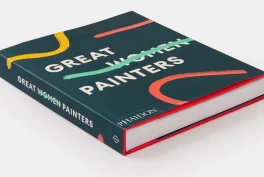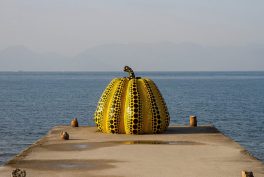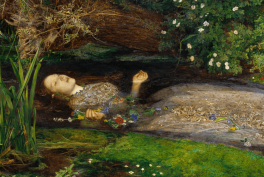The Format
Great Women Sculptors starts with a preface by editors Maia Murphy, Olivia Clarke, and Charlotte Flint and an introduction by Lisa Le Feuvre which establish the parameters of the book. It then takes the form of extended dictionary entries, looking at artists alphabetically, giving a page and a glossy color illustration to each.
There are both benefits and disadvantages to such an approach. It is easy to look up a sculptor that you might be interested in, it is good for casual browsing where you might come across new names and, as the editors suggest, find ‘new connections and surprising juxtapositions’. However, the lack of chronology and context can also be frustrating. Equally, restricting every artist to one illustration, although admirably democratic, can also feel limiting, particularly if they had a long career or significant changes in style.
The Design
The book is eye-catching enough to attract the casual buyer and look good sat on your coffee table at home. The gimmick of striking through the gender descriptor, which Phaidon have used throughout this series, is a clever, slightly controversial way of referring to the old imbalances of traditional art history. The bold-colored, geometric cover design continues the look of the previous books of Phaidon’s series, which is also echoed in the style of Katy Hessel’s best-seller The Story of Art Without Men. There is an obvious attempt to reach out to a wider, younger audience.
This funky styling is continued throughout. The list of contents at the start sprawls over four pages with oversized letters set against a background of the same floating shapes as the cover. There are wide margins, big, all-color illustrations, and a determination to avoid bland biographical entries in the text. Franky, it looks great.
Anyone who thinks that sculpture might be less interesting than painting, or who thinks women artists might be dull will find their expectations challenged by the appearance of this book as much as by its contents.
The Introduction
Lisa Le Feuvre’s short but excellent essay is arguably one of the best reasons to read Great Women Sculptors. She successfully debunks the idea of sculpture as a restrictive art form, writing instead about its ‘slippery definition’ which encompasses materials, location, subject, and the surrounding space. Le Feuvre also tackles head-on the question of what ‘women’s art might be’, citing Lucy Lippard and Linda Nochlin to show that this book is the end product of a long process of discovery and recognition.
What the introduction does not do is provide a historical context either to the societal norms which women sculptors of the past had to work within (and fight against), or to the artistic worlds in which they operated. There is no chronology, no mention of sculptors before the mid-19th century, no sense of those working outside the European tradition. Given the alphabetical structure of the main body of the book, it might have been helpful to have an extra introductory essay that tackles some of this background.
The Information
This is a comprehensive survey by any standards: over 300 artists across 500 years, working in 64 countries. Inevitably that means that information on individuals is scant, with entries of around 300 words. If you want to find out about a particular artist this Great Women Sculptors will never be more then a starting point. The book also has an expansive glossary containing techniques, materials, art movements, and generally useful definitions (diaspora, for instance); and a very comprehensive index.
There is a strong emphasis on 20th-century and contemporary work with examples ranging from Augusta Savage to Cornelia Parker and Jenny Holzer. Inevitably, there are proportionally fewer examples of earlier female sculptors. This is simply a reflection on the lack of surviving examples and the relative lack of producers – of all the art forms, sculpture was the most difficult for women to access and gain acceptance in. Big names like Maria Faydherbe, Harriet Hosmer, and Camille Claudel are there, along with lesser figures: Caterina de Julianis’ Penitent Magdalene in wax and mixed media relief was new to me. Basically, anyone and everyone is included.
Another Book About Women Artists
What started with Katy Hessel has become something of an avalanche. If you want to buy a book about women artists, there are plenty to choose from, including a number of excellent exhibition catalogs. Cynically, you might argue that Phaidon are cashing in on what is obviously a popular, and lucrative, current trend. Equally, there are plenty of people who would argue that separating women producers from their male counterparts in books like this simply perpetuates divisions and avoids comparison. Others might criticize an emphasis on gender in an increasingly fluid world.
However, sculpture frequently gets sidelined in general histories and Great Women Sculptors plugs a genuine gap in the market. It is also excellent in highlighting recent, current, and global majority practitioners – again, often a weakness in other books. It looks sassy but is never just a triumph of style over substance. It is great for dipping into, even though it leaves you frustratingly always wanting more. It is encyclopedic enough to justify its price tag. If you want to treat yourself or buy a present for an art-loving friend this autumn, it is definitely worth a look.
Great Women Sculptors is published by Phaidon, on sale from September 24th 2024, priced £49.95.











